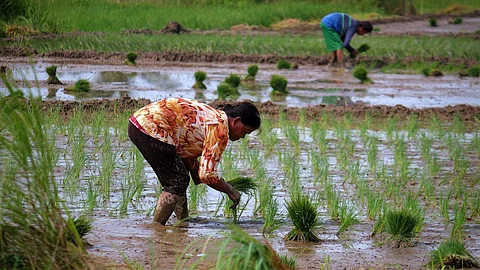
- NEWS
- the EDIT
- COMMENTARY
- BUSINESS
- LIFE
- SHOW
- ACTION
- GLOBAL GOALS
- SNAPS
- DYARYO TIRADA
- MORE

The Department of Agriculture (DA) is seeking urgent policy adjustments to protect local rice farmers as farmgate prices for palay (unhusked rice) drop sharply amid record-high domestic production and cheaper imports flooding the market.
Agriculture Secretary Francisco Tiu Laurel Jr. revealed that President Ferdinand Marcos Jr. is seriously weighing the suspension of rice importation and an immediate increase in rice tariffs to curb the influx of low-cost foreign rice and stabilize the local market.
According to Tiu Laurel, raising the current 15 percent rice import tariff – potentially to 25 percent, and eventually to 35 percent – would help rein in excessive imports and generate much-needed revenues for programs aimed at strengthening Filipino farmers' competitiveness.
“This is a delicate balancing act between our duty to protect rice farmers from those who undervalue their produce and ensuring consumers have access to affordable rice,” the DA chief said.
The call comes as farmgate prices for palay have plunged to as low as P8 to P10 per kilo – well below the production cost of P12 to P14 per kilo – due to a surge in imported rice. The DA said the landed cost of 5 percent broken imported rice is now down to about P35 per kilo or even lower, pulling market prices down and squeezing farmer margins.
Tiu Laurel also acknowledged the contributions of House Agriculture Committee Chairman and Quezon Rep. Mark Enverga, who has expressed support for proposed amendments to the Rice Tariffication Law (RTL). These amendments would seek to restore the regulatory powers of the National Food Authority (NFA) and give the DA more flexibility in managing rice supply and prices.
The RTL, passed in 2018, liberalized rice importation but retains provisions allowing the President to suspend imports under exceptional circumstances. One such provision – Section 3, as amended by Republic Act No. 12078 – permits a temporary import ban when excessive supply causes an extraordinary drop in domestic prices.
While supportive of tariff adjustments, the agriculture chief emphasized that any move must be phased and carefully timed to avoid disrupting the rice value chain and hurting consumers. Still, the final decision rests with President Marcos.
Last year, in response to soaring global rice prices, the President ordered a tariff reduction from 35 percent to 15 percent. That move, along with DA-imposed price ceilings on imported rice varieties, helped slash retail prices from over P60 per kilo to around P43 today.
However, global market dynamics have since shifted. Bumper harvests, the lifting of India’s export ban, and a record 9.08 million metric tons of palay produced domestically in the first half of 2025 have all pushed prices down. The Vietnamese DT8 variety, widely imported by the Philippines, now sells for just USD470 per ton – down from over USD700 previously.
As the price war intensifies, the DA reiterated the need for RTL amendments that would allow the NFA to play a more active role in stabilizing both palay and rice prices. Tiu Laurel said reinstating the NFA’s authority to release stockpiles and procure rice from local farmers would enable more targeted interventions.
“When its regulatory powers are restored, the NFA could provide the DA with more precise industry data, including consumption patterns and price trends as well as supply levels per region and province, which are invaluable in crafting more responsive policies,” Tiu Laurel added.
He also pointed out that freeing up warehouse space by selling existing NFA rice stocks would allow the agency to ramp up local palay procurement, at roughly a two-to-one ratio for every sack of rice produced, bolstering price support mechanisms for farmers.
